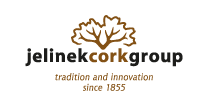Cork flooring offers countless benefits, making it an excellent choice for homes, offices, exercise studios … almost any indoor space. It is a stylish, comfortable, and naturally sustainable flooring solution that offers a variety of design possibilities.
Read moreHow can you use wine corks to build a stable boat?
In our 2nd installment on using cork for science, we investigate how to use cork to build a stable boat. In this case, we are referring to a small, toy boat - not one someone would actually sit in. Try building your boat in various configurations and decide which build you think makes it the most stable. Do you have other ideas? If so, build them and see if they are as stable as you had expected.
Read moreThe Cork Harvest: The People
The cork harvest, a fascinating process, has deep roots in tradition and family. It involves the careful removal of bark from the cork oak tree which, when done with the necessary care and precision, does not harm the tree. In fact, the bark grows back time and time again throughout the tree’s lifespan. This careful process wouldn’t be possible without the highly skilled individuals in the cork harvesting industry. The precision and experience of the cork cutters make this process so successful.
Read moreThe Use of Cork in Exhibits
When exploring a zoo or museum, you are likely to see cork bark in various exhibits. Its natural texture and remarkable qualities make it a creative and sustainable choice for designing displays that mimic the natural environment.
Read moreThe Use of Cork in Film and Theater
What do you think of when you think of cork? Probably opening a bottle of wine or popping the cork off a bottle of champagne. Maybe you think of the bulletin board hanging in your office. Some of you will even think of cork flooring. These are all great uses for cork, of course, but have you ever thought of how cork is used in film and theater?
Read moreHistorical Uses for Cork: Keeping Afloat - The Use of Cork in Life Jackets & Life Preservers
Thinking of the life jackets and personal flotation devices we know today, we wouldn’t typically think of cork. But did you know, back in the 1800s and early 1900s cork was actually the main component used in life jackets?
Read moreBeyond the Mediterranean with the Remarkable Cork Oak Tree
One of nature’s marvels, the cork oak tree, flourishes in the Mediterranean region, home to most of the world’s cork trees. These remarkable trees provide significant benefits to their native land. But can cork oaks thrive beyond the Mediterranean, and what impact do they have on their non-native landscape?
Read moreCork Trees: CO2 Sequestration & O2 Production
We know the cork oak tree is amazing for many reasons, the most popular probably being its ability to grow back its bark after each harvest. What may not be known is the crucial role the cork oaks play in both CO<sub>2</sub> sequestration and oxygen production. Cork trees, like all trees, absorb carbon dioxide through photosynthesis, storing carbon in their roots and branches while releasing oxygen back into the environment. So, what makes this tree different from other trees?
Read moreThe Importance of Cork Trees and Their Natural Ecosystems
The cork oak tree (Quercus suber) thrives along the Mediterranean coast of southwestern Europe and Western Africa, where there is a lot of sunshine but rainfall is scarce. While cork trees do grow in other areas with similar climates, the areas along the Mediterranean are some of the world’s top cork-producing regions.
Read moreSustainable Building Materials - Cork Spray
As we become more aware of the materials we use in building and construction and their impacts on the environment and our health, we are also becoming more innovative, coming up with new ways to use some of our oldest yet most environmentally friendly resources. Cork is a prime example of this. The use of cork in building and construction spans centuries. With a deeper knowledge of this remarkable natural material, we’re now uncovering new applications to take full advantage of the innate properties of cork.
Read moreSustainable Building Materials - Insulation Cork
As environmental concerns and global demand for energy continue to surge, both individuals and businesses are trying to find ways to minimize their ecological footprints. Architects, builders and homeowners are increasingly turning to innovative and sustainable materials for renovations and new construction projects. This is where insulation cork comes into play.
Read moreA little bit about the Jelinek Cork logo
The Jelinek Cork logo has undergone several transformations over the years. The most recent logo was designed, approved and put into action in 2008. Michal Macko, a graphic designer in Bratislava, created the logo as an entry for a logo design competition. The competition was developed by Korok Jelinek for the University of Graphic Design in Bratislava, Slovakia.
The Jelinek Cork logo symbolizes many things:
The tree represents the cork oak tree – the source of cork.
The tree also represents nature and the environment – issues Jelinek Cork Group cares deeply about.
The tree branches represent deer antlers and the Jelinek name. In Czech, the word “Jelinek” means “little deer”.
Finally, just as cork is stripped off the tree and then regrown, so are the antlers of a deer – they are shed each year and then regrown.

